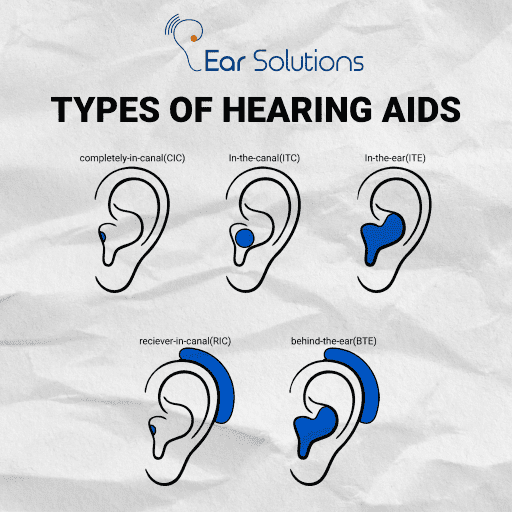Hearing loss is a prevalent issue that affects a significant number of individuals globally. Various factors, such as exposure to loud noise, certain medications, and age-related hearing loss, can cause it. While there is no cure for hearing loss, treatment options, including hearing aids, are available.
Hearing aids are small electronic devices that amplify sounds and make them louder. They come in various styles and sizes, each with its unique set of features and benefits. Therefore, it is crucial for individuals with hearing loss to work with a hearing healthcare professional to determine the most appropriate type of hearing aid for their specific needs. In this blog post, we will discuss the different types of hearing aids and how to choose the right one for you.
The first type of hearing aid is the in-the-ear (ITE) hearing aid. This type of hearing aid is custom-fit to the individual’s ear and sits inside the ear canal. ITE hearing aids are suitable for individuals with mild to moderate hearing loss and are available in full shell and half shell styles. The full shell ITE hearing aid is the most visible, while the half shell is less visible.
The second type of hearing aid is the in-the-canal (ITC) hearing aid. This type of hearing aid is also custom-fit to the individual’s ear and sits inside the ear canal. However, ITC hearing aids are smaller than ITE hearing aids and are less visible. They are suitable for individuals with mild to moderate hearing loss.
The third type of hearing aid is the completely-in-the-canal (CIC) hearing aid. This type of hearing aid is also custom-fit to the individual’s ear and sits completely inside the ear canal. CIC hearing aids are the smallest and least visible of the hearing aids. They are suitable for individuals with mild to moderate hearing loss.
The fourth type of hearing aid is the behind-the-ear (BTE) hearing aid. This type of hearing aid sits behind the ear and is connected to a custom-fit earmold that sits inside the ear canal. BTE hearing aids are suitable for individuals with mild to severe hearing loss and are available in standard, mini, and open-fit styles.
The fifth type of hearing aid is the Receiver-in-the-ear (RITE) hearing aid. This type of hearing aid sits behind the ear and is connected to a custom-fit earmold that sits inside the ear canal. The speaker is located in the earmold, rather than in the hearing aid itself. RITE hearing aids are suitable for individuals with mild to severe hearing loss.
When determining which type of hearing aid is right for you, it is essential to work with a hearing healthcare professional. They will conduct a hearing test and evaluate your specific needs and lifestyle. Additionally, they will take into account your budget, as hearing aids vary widely in price.
A hearing healthcare professional will also assist you in understanding the different features available in each type of hearing aid. For instance, some hearing aids have wireless connectivity, allowing you to connect to your phone, TV, or other devices. Some hearing aids also have multiple listening programs, which can be adjusted to different environments.
Another important factor to consider is the level of aftercare and support available for your hearing aid. A good hearing healthcare professional will provide follow-up care and support, including regular check-ups and adjustments to ensure your hearing aid is working correctly and you are getting the most out of it.
In conclusion, it is vital to work with a hearing healthcare professional to determine the most suitable type of hearing aid for your specific needs. They will take into account your budget and lifestyle.





